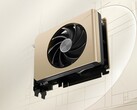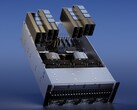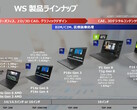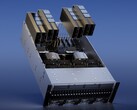Famous hardware-focused YouTuber Daniel Owen has done an extremely in-depth comparison between the Nvidia GeForce RTX 5050 and the RTX 3060 12 GB variant.
The YouTuber tested over 50 games at 1440p and 1080p, using both medium and max graphics settings. They also tested these games at native resolution and with DLSS turned on to cover all the possible scenarios in which both the RTX 5050 and RTX 3060 12 GB might be used.
The system used for testing had an AMD Ryzen 9 9800X3D (currently $652 on Amazon US) and 32 GB of fast DDR5-6000 memory from G.SKILL’s Trident series. At the very start, Daniel makes the goal clear: to find out if 8 GB of VRAM on newer GPUs like the RTX 5050 is enough for games in 2025, or if it’s better to go with an older card like the RTX 3060 with 12 GB of VRAM.
Daniel found that when games push past 8 GB of VRAM, the RTX 3060 pulls ahead with fewer stutters, better 1% lows, and smoother frame times, particularly at max settings. However, in scenarios where VRAM isn't a bottleneck, the RTX 5050 consistently delivers higher raw FPS, sometimes leading by 10-13% in modern AAA titles.
Oblivion Remastered pushes both cards hard. At 1080p max, they tie at 27 FPS, but DLSS gives the RTX 3060 a boost to 37 FPS, while the RTX 5050 stays locked due to its tighter VRAM limits. Drop to medium settings and the playing field evens out, until DLSS kicks in, where the RTX 5050 suddenly jumps ahead with 71 FPS versus the RTX 3060’s 61 FPS.
Kingdom Come: Deliverance 2 isn’t kind to either GPU at max settings. At 1440p, the RTX 3060 hits 20 FPS while the RTX 5050 drops to a VRAM-choked 7 FPS. DLSS helps, but not by much. The story changes at medium settings, at 1080p, the RTX 5050 pulls ahead with 91 FPS vs. the RTX 3060’s 80. Even at 1440p, the RTX 5050 leads by a small margin, and with DLSS Balanced, it stretches that gap to 85 FPS versus 75 FPS. Both cards offer smooth gameplay here, but the RTX 5050 clearly has the edge.
In Assassin’s Creed Shadows pushes both GPUs past their VRAM limits, leading to poor performance at max settings. At 1080p native, the RTX 3060 edges out with 22 FPS versus 20 on the RTX 5050. Even with DLSS Quality enabled, frame rates barely move, 26 FPS on the RTX 3060 and 24 on the RTX 5050. Things don't improve much at 1440p either, where both GPUs hit just 18 FPS. DLSS Balanced gives a small bump, bringing the RTX 3060 to 25 FPS and the RTX 5050 to 24, but it’s still not playable. Drop the settings to 1080p medium and the RTX 5050 pulls ahead with 58 FPS versus 47 on the RTX 3060, although differences in lighting during testing may have influenced the results slightly, according to the YouTuber.
Neither GPU is built for maxed-out 1440p, but both can handle 1080p on medium settings with DLSS, and in a lot of cases, the RTX 5050 pulls slightly ahead. Daniel breaks down which card does better at which settings, depending on how demanding the game is. If you’re trying to figure out which one fits your setup best, the full video is packed with helpful, in-depth insights. Definitely worth a watch.



















